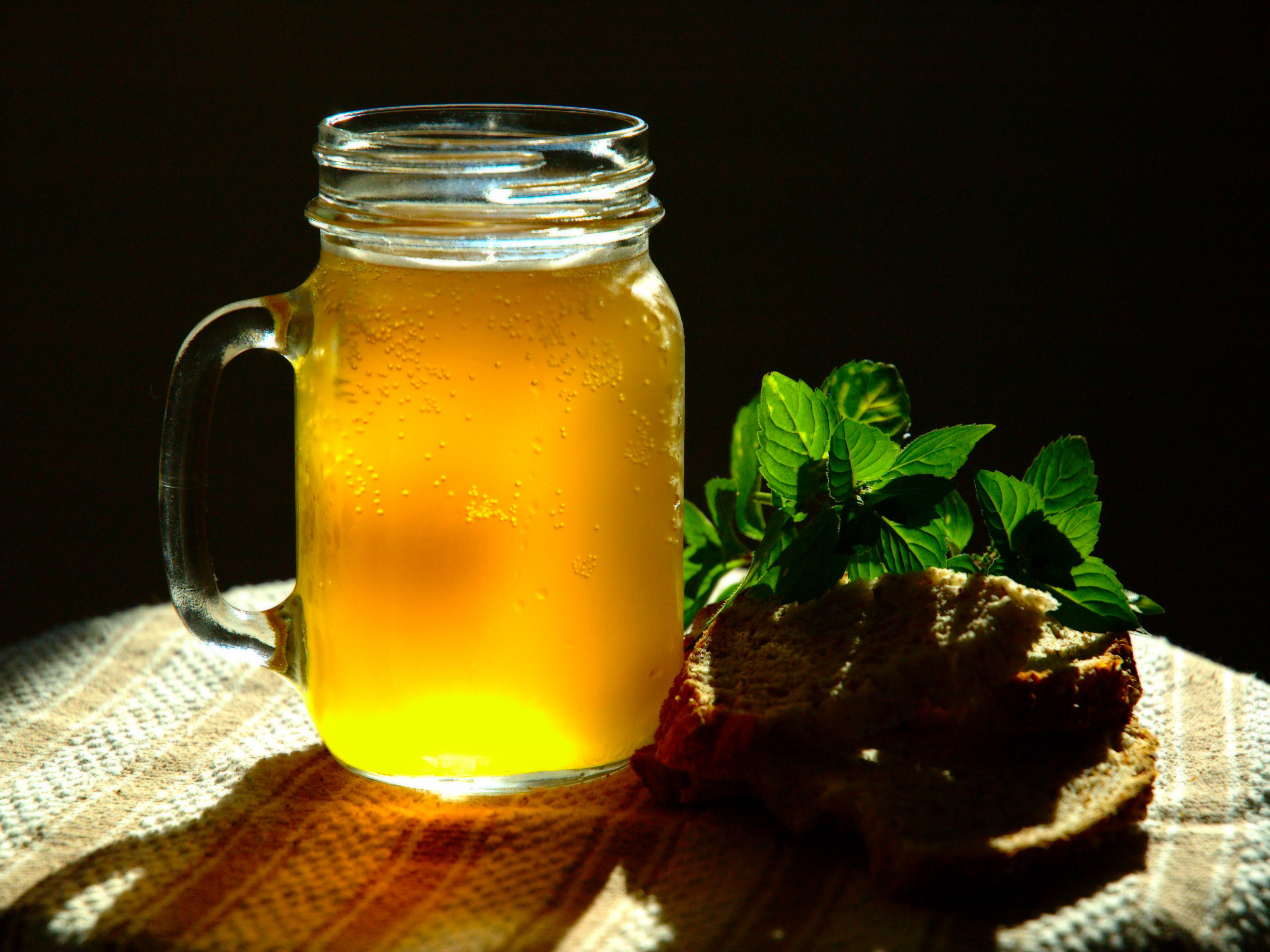TasunkaWitko
Well-Known Member
Has anyone tried it?
I'm thinking of giving this a go after my Finnish Sima:
https://www.homebrewtalk.com/f30/sima-finland-467664/
Kvas
Mint-Flavoured Bread Beer

Photo Credit: http://upload.wikimedia.org/wikipedia/commons/9/97/Mint_bread_kvas.jpg
From Time/Life's Foods of the World - Russian Cooking, 1969:
To make 6 cups:
1 pound day-old black bread or Danish pumpernickel
2 tablespoons active dry yeast
1 cup sugar
1/4 cup lukewarm water (110 to 115 degrees)
2 tablespoons frsh mint leaves or 1 tablespoon crumbled, dry mint
2 tablespoons raisins
Preheat the oven to 200 degrees. Place the bread in the oven for about 1 hour, or until it is thoroughly dry. With a heavy knife, cut and chop it coarsely. Bring 6 quarts of water to a boil in an 8-quart casserole and drop in the bread. Remove from the heat, cover loosely with a kitchen towel, and set it aside for at least 8 hours. Strain the contents of the casserole through a fine sieve set over another large pot or bowl, pressing down hard on the soaked bread with the back of a large spoon before discarding it.
Sprinkle the yeast and 1/4 teaspoon of the sugar over the 1/4 cup of lukewarm water and stir to dissolve the yeast completely. Set aside in a warm, draft-free spot (such as an unlighted oven) for about 10 minutes, or until the mixture almost doubles in volume. Stir the yeast mixture, the remaining sugar and the mint into the strained bread water, cover with a towel, and set aside for at least 8 hours.
Strain the mixture again through a fine sieve set over a large bowl or casserole, then prepare to bottle it. You will need 2 to 3 quart-sized bottles, or a gallon jug. Pour the liquid through a funnel 2/3 of the way up the sides of the bottle. Then divide the raisins among the bottles and cover the top of each bottle with plastic wrap, secured with a rubber band. Place in a cool - but not cold - spot for 3 to 5 days, or until the raisins have risen to the top and the sediment has sunk to the bottom. Carefully pour off the clear amber liquid and rebottle it in the washed bottles. Refrigerate until ready to use. Although Russians drink kvas as a cold beverage, it may also be used as a cold-soup stock for dishes such as okroshka and botvinia.
I'm thinking of giving this a go after my Finnish Sima:
https://www.homebrewtalk.com/f30/sima-finland-467664/


